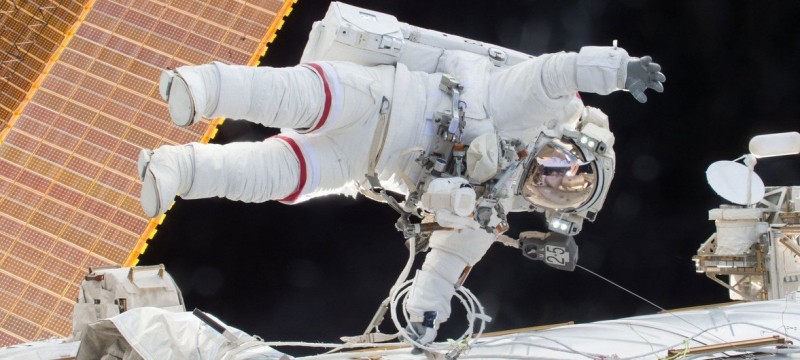
NASA/Johnson NASA astronaut Scott Kelly is seen floating during a spacewalk on 21 December 2015 as he and fellow astronaut Tim Kopra released brake handles on crew equipment carts on either side of the space station.
“Our common interest in preserving the domain of outer space, a province of humankind that benefits us all, requires agile and multi-stakeholder governance responses,” he wrote in the introduction.
The policy brief examines some of the “unprecedented” changes underway in outer space, including the sheer volume of satellites being launched into orbit, the participation of the private sector, and the return of astronauts to deep space after more than half a century.
It outlines major trends that are impacting “space sustainability” and their effect on realizing the SDG promise of a more just, equitable and greener planet down below, by 2030, while also assessing the risks if these challenges are not solved.
Satellites and space tourism
The past decade has seen an exponential increase in the number of satellites launched into outer space – from 210 in 2013 to 2,470 last year – and mainly by private companies.
The period was also marked by a rapid expansion in the number of private missions to space, including the first commercial mission to the International Space Station, which took place in 2021.
The number of planned private missions for communications, resource activities, space tourism and science is also rising, according to the report. While the United States has led the sector, many new commercial space companies have emerged in China, India and Japan.
Although humans have not been to deep space since the final flight of the Apollo programme in 1972, the report points to a “new era” of exploration. For example, United States space agency NASA is planning a manned flight around the moon in 2024, while the American private company Space X wants to send a crew of artists to deep space on an reusable transportation system known as Starship.
Rise in risks
While these developments have the potential to unlock enormous opportunity for humanity, the report warns that they could also exacerbate risks.
“The rapid increase in the number of objects and frequency of missions to outer space brings a corresponding increase in the risks of accident, collision and debris,” it said.
“This issue will become increasingly relevant as space actors conduct new and novel missions such as debris removal, in-orbit servicing and manufacturing and space tourism.”
A shared responsibility
The report concludes with the Secretary-General’s recommendations for harnessing the potential of outer space for achieving the SDGs.
“It is our shared responsibility to ensure that existing international space law is fully implemented, and that effective governance is in place to propel innovation and mitigate risks,” it said.
One option calls for the UN Committee on the Peaceful Uses of Outer Space to develop a unified regime for space sustainability.
Space traffic
“Such a regime…would foster transparency, confidence-building and the interoperability of space operations in Earth orbit and beyond, including on the Moon and other celestial bodies.”
Alternatively, the Committee could consider developing new governance frameworks for various areas of space sustainability, such as space traffic management, space debris removal and space resource activities.
Space for women
UN entities are also urged to boost efforts to advance the equal participation of women in the aerospace sector, including through programmes that promote science, technology, engineering and mathematics (STEM) education for girls.

